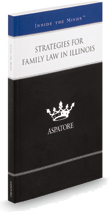On behalf of Stange Law Firm, PC posted in support on Thursday, September 5, 2019.
Divorcing parents may have heard of the best interests of the child standard and may wonder what it is and how it is used to determine child custody. The best interests of the child is a standard the family law court uses to determine child custody and visitation and help parents work out their child custody concerns.
What is in the best interests of the child should always remain in focus when child custody determinations are being made. Whether the family law court is making a child custody decision or the divorcing couple is reaching a child custody arrangement together, the guiding consideration should always be what is in the best interests of the child which will be used to help determine physical and legal custody, as well as visitation and any modifications down the road.
Factors that are used to determine what is in the best interests of the child include the age and sex of the child; the wishes of the child in some circumstances; any special needs the child may have and the ability of the parents to meet those needs; the mental and physical health of the parents; the need for a continuous and stable home environment; any children whose custody is relevant to the child’s custody arrangement; relationships and interactions with other members of the household; opportunity to interact with extended family members; adjustments to school and community; religious and cultural considerations; and any history of abuse.
When evaluating these factors, the family law court seeks to develop a child custody arrangement that is best for the child and works for the family. The overall goal of the best interests of the child standard is to foster and encourage the child’s happiness, security, mental health and emotional development and overall well-being. Close relationships with both parents are usually regarded as beneficial for the child. Because of the importance of child custody, it is essential for divorcing parents to be familiar with how child custody decisions will be made and what will be taken into account.



